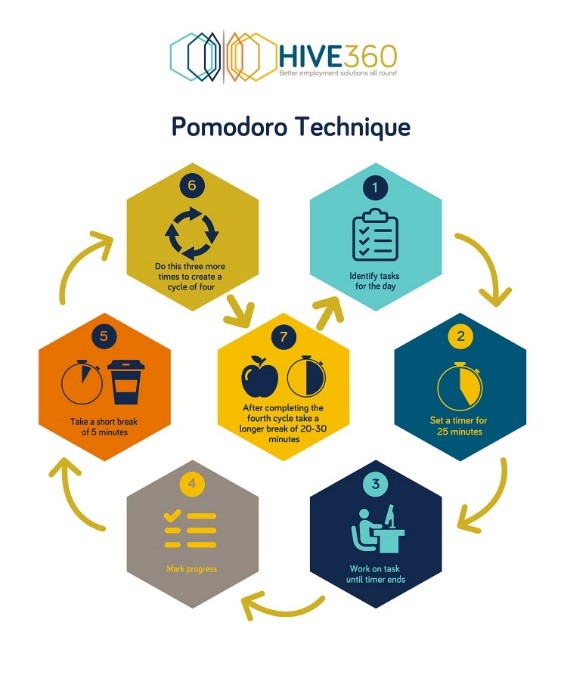Remote working: how to support employee mental health

As the impact of coronavirus takes hold, stress for the region’s workforce is at an all-time high, with concerns over job security and personal finances escalating, and those who can, working in isolation from home in line with the government’ social distancing instructions. With this in mind and ahead of the UK’s Stress Awareness Month in April, David McCormack, CEO of employee engagement innovators HIVE360, offers guidance on managing the mental health of employees who are working remotely.
Employers have been encouraged to equip their employees with the tools and equipment so that they can work remotely, and for an indefinite period. Many employees may find it difficult to suddenly adapt to 
At this time, Stress Awareness Month presents the opportunity to focus on identifying the triggers for work-related stress, and to take action to support employee mental health and wellbeing, manage their work-related worries and keep workers engaged with the business during these unprecedented times.
Four ways to support the mental health of remote workers:
- Keep in touch
The need for clear communication is more important now than ever. Make a point of checking in with your staff regularly, and ask how they are coping with the change of routine. Use video calls to communicate where possible as this provides a greater level of social interaction than an email or message, which is particularly important for employees who are having little interaction with the outside world and those who live alone. The constant stream of news and social media updates about coronavirus can be anxiety-inducing, so use your video calls to ask employees how they are feeling and listen to any concerns they may have. This doesn’t mean you have to provide all the answers – it simply shows you are there to help and that you value their wellbeing and contribution to the business.
Sadly, many people still feel uncomfortable about approaching the subject of mental health with their bosses – according to the findings of our recent ‘People at the Heart’ research, over a quarter (28%) of UK workers feel uncomfortable talking to their employer about their mental health.
To address this, employers must seek to create an open culture by promoting honest dialogue, and regular catch ups with team members and holding virtual team meetings is a good way of doing this to give your people the chance to talk about their workload and stress levels.
It is also important to ensure you keep your employees informed about the impact coronavirus may be having on the business, and any changes that are taking place as a result.
- Encourage work:life balance
When an employee’s home becomes their work environment, it can be easy for their work: life balance to be negatively affected. Poor work:life balance reduces productivity and can lead to stress and mental health problems. Build-in positive steps towards work:life balance to your staff mental health and wellbeing strategies; encourage staff to work sensible hours, take full lunch breaks and get outside for fresh air and exercise once a day.
In our research, half of all UK workers agreed that poor workplace technology affects their work: life balance, with 44% admitting it affects their mental wellbeing. Ensuring your employees have the right tech and equipment – including an appropriate desk and comfortable chair – to carry out their role from home effectively and efficiently is vital.
- Suggest a functional routine
Encourage your employees to establish and maintain a healthy daily routine that puts them in the right mindset to work as they would do in the office. Getting up at the time they usually would for work may give them the opportunity to exercise or prepare a healthy breakfast that will set them up for the day.
There’s a really easy and useful technique that might be worth employing to help you team stay focused and productive called the Pomodoro technique, which involves working in bursts of productivity with short periods of inactivity in between. This can be an effective method to use when working in a home environment where there might be more distractions.
Setting small goals and targets for employees is a good way to maintain levels of motivation, but ensure these are realistic and achievable. Remain mindful that they are navigating a new working environment and tasks may take them slightly longer to complete than usual.
- Prepare to be flexible
Some employees will prefer to work according to a set schedule, with regular conference calls and virtual meetings throughout the day. Others will require a more flexible or agile approach, particularly those juggling the homeschooling of children, or caring for a sick relative. Offering the ‘hidden workforce’ support with flexible and agile working is key, as is ensuring they have the right tech too – our survey revealed 60% of workers who care for someone with a disability or an illness admit that poor workplace technology has a negative effect on their work:life balance.
Let your employees know you understand everyone’s personal situation is different and that you’ll do your best to accommodate it. Remind people of their worth as an employee, and the positive attributes they bring to the team. After all, people are every company’s most valuable asset.
For more information: www.hive360.com where you can download and read the People at the Heart research report.










